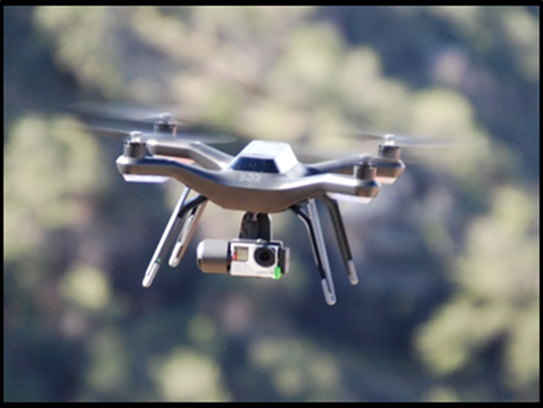Unauthorized drones continued to vex crews battling wildfires, with another spotted on Sunday that temporarily halted aerial efforts to put out a fire northwest of Flagstaff. It was the second drone that has been observed at the fire, known as the Boundary Fire, said Dennis Godfrey, a public information officer with the Bureau of Land Management.
It was the second drone that has been observed at the fire, known as the Boundary Fire, said Dennis Godfrey, a public information officer with the Bureau of Land Management.
It was unknown how long efforts were stopped due to the drone, Godfrey said. The fire, started by lightning on June 1, was 88 percent contained, officials said.
Firefighters were unable to recover the drone or identify the operator.

One of the drones used at the Grand Canyon hovers in an area of the park. (Photo: Grand Canyon National Park)
Since drones became popular among hobbyists, wildfire officials have warned against their use.
"I think it's happening all over," he said. "And it's a problem if people don't abide by restrictions."